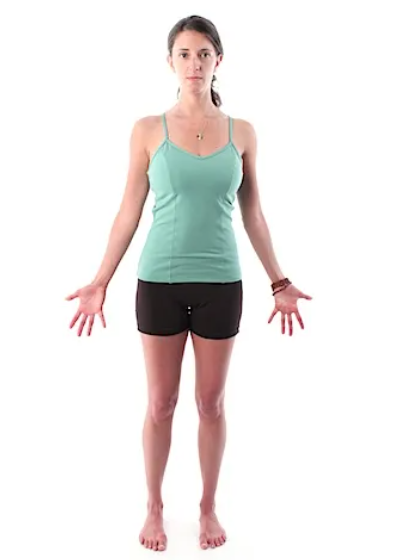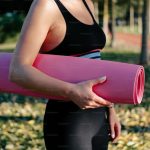Breathing. It’s Funny How Easily We Forget To Do Something We Do All The Time Once We’re On The Mat, Right? Have We Stopped To Ask What Is Actually Happening When We Breathe And How Does Yoga Affect It? The Respiratory System Actually Has A Lot To Contribute To Your Practice — Far More Than Just Keeping You Alive!
HOW TO BREATHE
Knowing how your body breathes is like a pilot learning how the engine of a plane works. Yes, the pilot probably won’t be the one going in and fixing it when things go awry, but he still needs to know it in order to use the plane properly and skillfully. Same goes for your breath! How can you expect to use your breath to its fullest potential if you don’t know how it works? Let’s look at it from the outside in.
- The chest cavity is composed of the spine at the back, the breast bone or sternum at the front, and 12 ribs on each side of the chest. The top seven ribs are attached directly to the sternum, but the bottom three are more interesting. They are attached to cartilage and don’t come all the way to the front of the chest, and are sometimes known as the ‘floating ribs’.
- The muscular system contributes the diaphragm and the intercostal muscles to the breathing process. The diaphragm is a big flat muscle that attaches to the ribs making the ‘floor’ of the chest cavity. The intercostal muscles fill the spaces between the ribs and are what you feel stretching in any side bends.
FUN FACT: When you’re eating spare ribs, you are basically enjoying the animal’s intercostal muscles. Yum! - Most importantly we have the lungs suspended inside the chest cavity and above the diaphragm, accompanied by the heart sitting slightly off-center between the two lungs, blood vessels and nerves. The lungs sit right against the inside of our rib cage, with only a tiny film of fluid to get things moving when needed.

These three components work together so that we breathe about 15 times a minute, all driven by the diaphragm. When resting, the diaphragm sits in a dome-like position, but on an inhale it moves downward into a flat sheet like a trampoline. As we breathe out it reascends and relaxes back into the dome shape.
When the diaphragm contracts and flattens, the pressure in the chest cavity reduces and stretches the lungs. This draws air through your mouth and nose into your lungs and — hey presto! — you take a breath. When the diaphragm relaxes the pressure in the chest cavity increases again, the lungs collapse and push the air out, so you could say the lungs work just like old-fashioned bellows.
FINE, BUT WHAT ABOUT YOGA?
The function of breathing is to bring oxygen into our blood stream and flush out carbon dioxide. As we start to breathe more deeply during our yoga practice, either cardiovascular system to work as efficiently as possible to get fuel to our muscles and organs.
“SIT UP STRAIGHT”
There’s a reason your mother always told you to sit up straight, besides simple aesthetics. The position that we hold ourselves in when we breathe makes a huge difference to how effective our breathing is. Try slouching in your chair and taking a deep breath then sit up really straight and breathe deeply again. Go on, try it now. I’ll wait here until you’re done.
Done? Great — how was that for you? Which position gives you the bigger breath? My money is on the sitting up straight deep breath. This is because there is physically more space available in the chest cavity for the lungs to expand into when you sit up straight. But which posture do we spend the most time in these days? If you guessed the ‘slouched over our computer/steering wheel’ posture, you’re right! More on that in my article about how sitting is the new smoking and how yoga can help.
The good news is that yoga also improves our posture in other ways that allow us to breathe more deeply. By increasing the range of movement in our shoulders we can stretch the muscles on the front of our our chest and widen our shoulders. Poses like Warrior 1 and locust with hands clasped behind you are great for this.
LET’S EXPAND THOSE LUNGS!
What are the best things to do to assist lung functionality?
- Any back bends (locust, camel, crescent lunges) will help you to sit and stand up straighter by taking our spine out of the big C-shaped curve that modern lifestyle keeps us in. This improves posture, lifts our ribs away from our abdomen and allows our diaphragm to move freely. The result is that the diaphragm can work more efficiently to draw air into our lungs.
- Strengthening the rhomboid muscles, the ones that draw our shoulder blades together, helps to draw the shoulders back and opens the chest further. Try working on this in Triangle to feel that widening of the chest.
- Simple breathing exercises or prānāyāma will strengthen your diaphragm. You can even work it harder by lying flat on your back with a small weight on your belly while you breathe deeply into your belly. Focussing on prānāyāma during āsana practice will really emphasise the chest opening poses too – it is incredible.

I’ve been working with one of my students on this since she had difficulty breathing properly. About three months after taking up gentle yoga, her lung capacity had increased significantly (much to her doctor’s delight) and she was feeling SO much better too.
YOGA IS AWESOME!
Nature has given us this wonderful respiratory system that works away in the background day in and day out, and making sure we use it efficiently can really boost how well it works. Now that you know how, I invite you to go for it! Even in your chair just now, you can simply sit tall, open your shoulders and work that diaphragm. It’s that simple.













